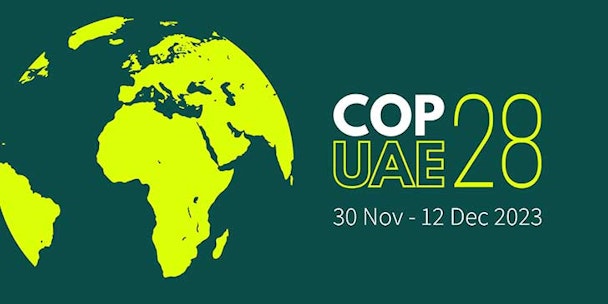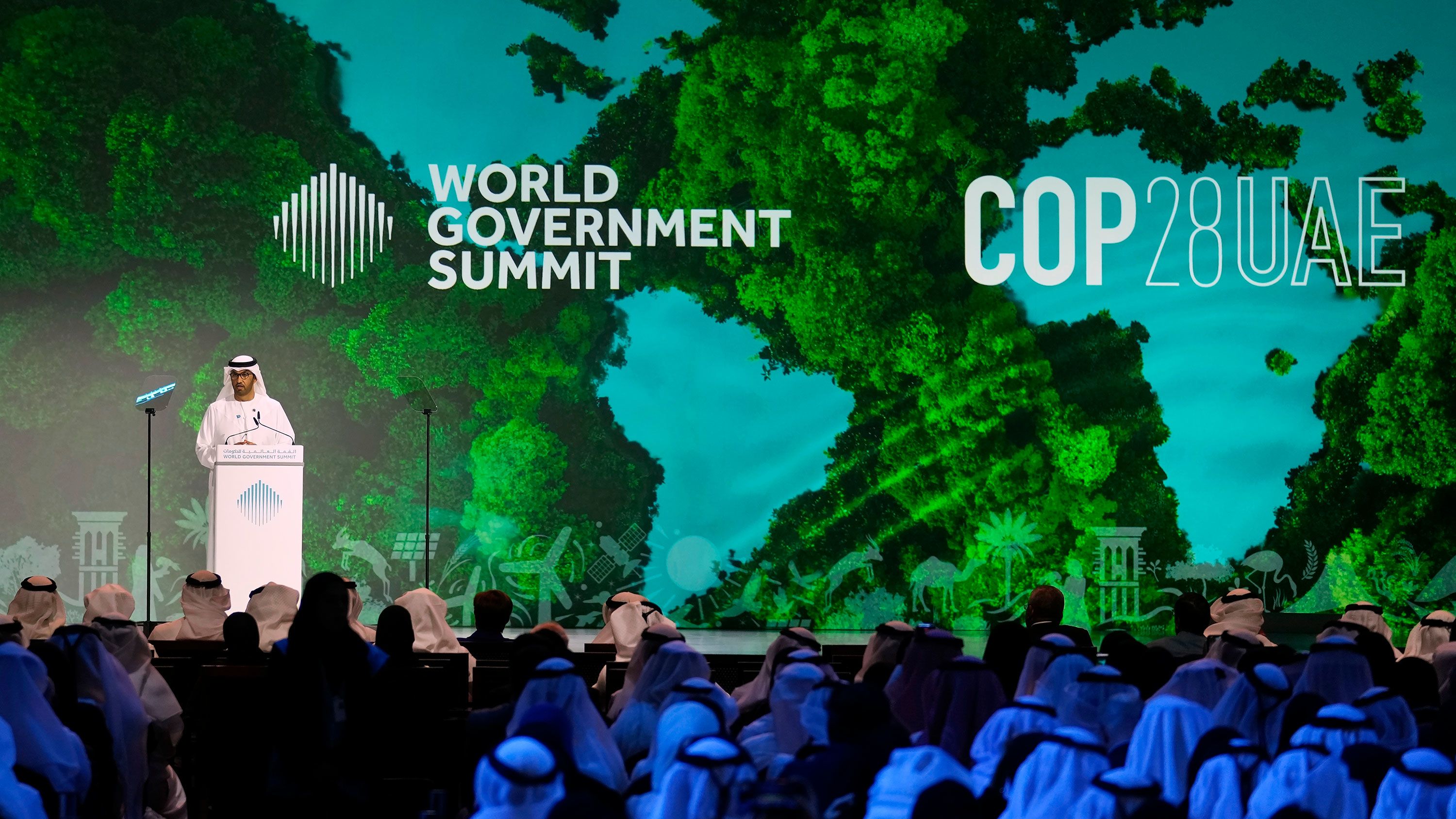Overview
The United Arab Emirates (UAE) takes the global spotlight as the host of COP 28, slated from November 30 to December 12, 2023. With over 70,000 delegates, the summit aims to expedite the transition to sustainable energy and curb carbon emissions.

During the grand opening, Prime Minister of India Narendra Modi announced India’s aspiration to host COP 33 in 2028. This declaration emphasises India’s proactive role in the fight against climate change, showcasing a dedication to leading global efforts in environmental sustainability.
With no further ado, let’s explore the pivotal process of organising a COP and other details that ultimately shape this monumental event’s success.
What are COPs?

COPs, or Conferences of the Parties, are formal meetings convened under the United Nations Framework Convention on Climate Change (UNFCCC), established in 1992. These gatherings bring together parties, i.e. governments, to assess global efforts in achieving the primary goal of the Paris Agreement—to limit global warming to 1.5 °C above pre-industrial levels.
During COPs, decisions are made on strategies to reduce greenhouse gas emissions, adapt to climate change impacts, address Loss and Damage for vulnerable countries, and support nations in transitioning to sustainable economies. The meetings are crucial in shaping international climate policies, focusing on finance, technology, and capacity-building for resilience and mitigation efforts.
Why are COPs necessary?
COPs play a pivotal role in the global fight against climate change by providing a platform for governments to assess progress and negotiate effective strategies. These conferences foster international collaboration, considering the diverse circumstances of participating nations.
Beyond governmental involvement, COPs elevate awareness of the climate crisis, emphasising the need for collective action involving the private sector, civil society, industry, and individuals.

The urgency of the climate crisis is underscored by the recognition that every incremental rise in global temperature, every passing year, and every decision made at COPs significantly impact the trajectory of climate change.
In the words of UNFCCC Executive Secretary Simon Stiell, “Every COP matters” in the race against time to address this pressing global challenge.
What is the role of the COP host country?
The role of the COP host government is integral to the conference’s success. Primarily, they are responsible for providing the necessary infrastructure, facilities, and services for the COP, ensuring a conducive negotiation environment.
This encompasses offering premises, equipment, and utilities and facilitating translation services in all six working languages of the UN. The host government organises facilities for media representatives and manages security outside the core “blue zone,” secured by UN staff.

Beyond logistical aspects, the host government plays a leadership role in engaging government and non-party stakeholders, fostering collaboration for adequate preparation and delivery of successful COPs. Their active involvement is crucial in creating a platform for meaningful global discussions and decisions on climate action.
How are the host countries selected?
The selection of the host country for the conference involves a collaborative process within regional groups. Members of these groups consult to decide which country from their region will offer to host the meeting.
The hosting rotation typically occurs among the five United Nations regional groups: The African Group, the Asia-Pacific Group, the Eastern Europe Group, the Latin American and Caribbean Group (GRULAC), and the Western European and Others Group (WEOG). Once a country is chosen by its regional group, it formally sends an offer to the UNFCCC secretariat.

The COP then considers these offers, adopting a decision titled “Dates and Venues of Future Sessions,” accepting the offer with confirmation pending from the Bureau of the COP.
The secretariat conducts a fact-finding mission to the prospective host country to ensure all logistical, technical, and financial elements are in place. It reports back to the Bureau at the beginning of the year. This thorough process ensures the selected host country is well-equipped to facilitate a successful COP conference.
What is the role of the UN Climate Change Secretariat?
The UN Climate Change Secretariat plays a pivotal role in organising COPs, acting as the custodian of the UN climate change process. Its primary responsibility is safeguarding the integrity of the UN Framework Convention on Climate Change, the Paris Agreement, and its associated goals. In collaboration with the host country and Presiding Officers nominated by governments, the secretariat efficiently manages the intricate negotiations during COPs.
This involves ensuring delegates have the necessary resources, documents, and facilities, facilitating a smooth and productive negotiation process. Additionally, the secretariat actively engages non-party actors during COPs, overseeing their involvement in formal work programs and orchestrating multi-stakeholder dialogues.
These non-party actors encompass representatives from cities, regions, businesses, investors, and civil society groups. By coordinating these diverse stakeholders, the secretariat contributes to fostering a holistic and inclusive approach to addressing the challenges of climate change on a global scale.
What is the role of the COP President?

The COP President plays a crucial role in guiding the proceedings of COPs, ensuring adherence to rules of procedure, and facilitating consensus among country delegations on pivotal issues. The incoming COP President, or COP President-designate, elevates international ambition to address climate change.
This involves actively engaging with countries, institutions, businesses, and stakeholders to secure necessary commitments in the lead-up to and during COP. The President develops effective international relationships and fosters collaboration to advance the conference’s goals. Additionally, the role includes crafting a vision for the optimal outcome of the meeting, emphasising the importance of unified efforts in tackling the global challenge of climate change.
How is the COP President selected?

The selection of the COP President involves consultations within the regional group of the host country. Members of the host region’s group engage in discussions to agree on the representative from their country who will be nominated for election as the President-designate.
Once this decision is made, the chair of the regional group officially communicates this information to the UNFCCC secretariat. The election of the President occurs at the opening of each COP. The candidate nominated by the regional group is then formally elected as the COP President.
Are COP Presidencies and host countries always the same?
While it is typical for the country holding the COP Presidency to also host the conference, there are instances where they differ. Suppose there is no hosting offer from the country holding the Presidency. In that case, the default location is the seat of the secretariat in Bonn, Germany. Examples of this divergence include COP 23, where Fiji held the Presidency. Still, the conference took place in Bonn for logistical reasons. Similarly, COP 25, presided over by Chile, had to be relocated to Madrid, Spain, shortly before the scheduled conference.
Conclusion
In conclusion, the intricate process of hosting COP events, from the selection of the host country to the coordination by the COP President and the UN Climate Change Secretariat, showcases the meticulous detailing essential for their success. Every COP requires careful planning, collaboration, and commitment to address the urgent global challenge of climate change.











